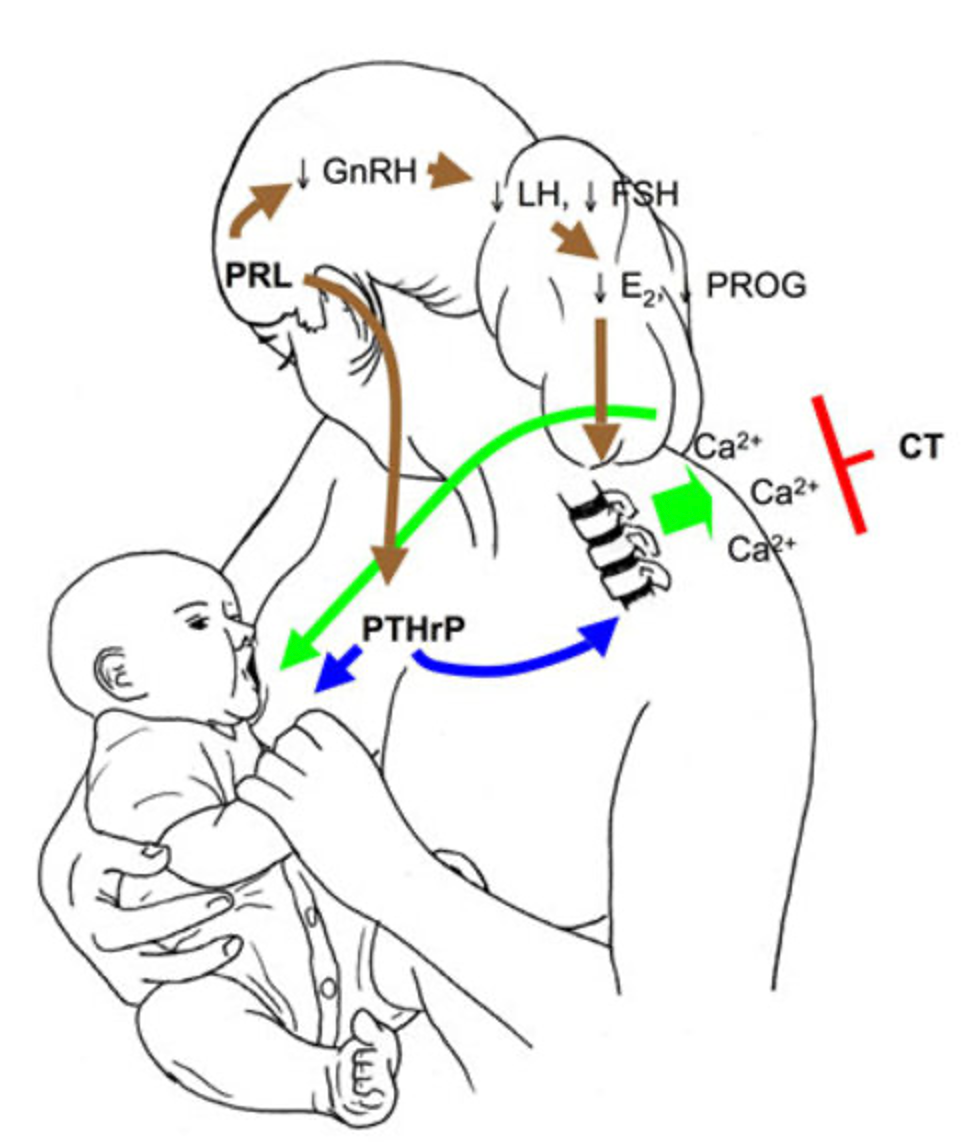
Figure 5. Brain-Breast-Bone Circuit. The breast is a central regulator of skeletal demineralization during lactation. Suckling and prolactin both inhibit the hypothalamic gonadotropin-releasing hormone (GnRH) pulse center, which in turn suppresses the gonadotropins (luteinizing hormone [LH] and follicle-stimulating hormone [FSH]), leading to low levels of the ovarian sex steroids (estradiol and progesterone). PTHrP production and release from the breast is controlled by several factors, including suckling, prolactin, and the calcium receptor. PTHrP enters the bloodstream and combines with systemically low estradiol levels to markedly upregulate bone resorption. Increased bone resorption releases calcium and phosphate into the blood stream, which then reaches the breast ducts and is actively pumped into the breast milk. PTHrP also passes into milk at high concentrations, but whether swallowed PTHrP plays a role in regulating calcium physiology of the neonate is unknown. Calcitonin (CT) may inhibit skeletal responsiveness to PTHrP and low estradiol. Not depicted are that direct effects of oxytocin and prolactin on bone cells are also possible. Adapted from ref. (26) © 2006, The Endocrine Society.
